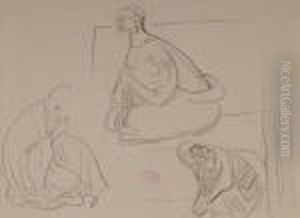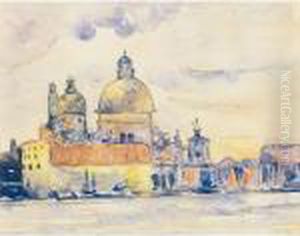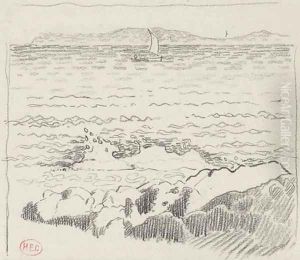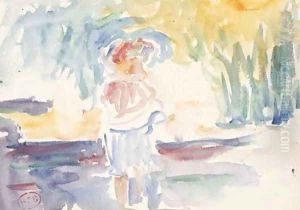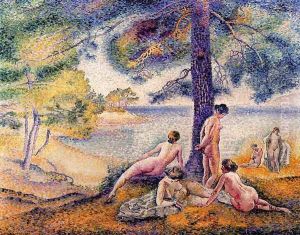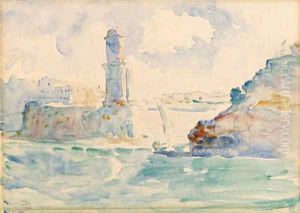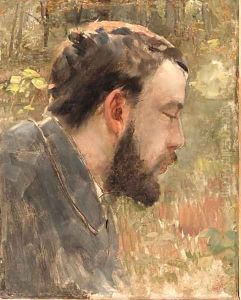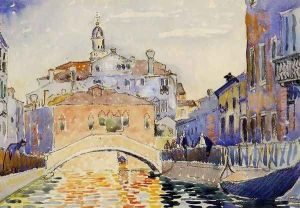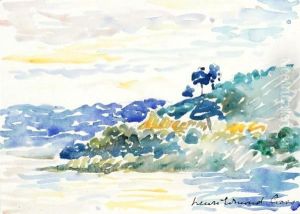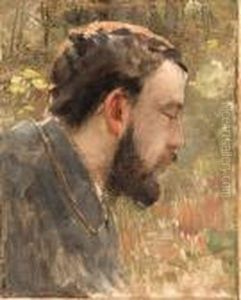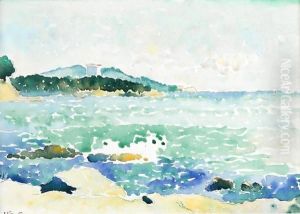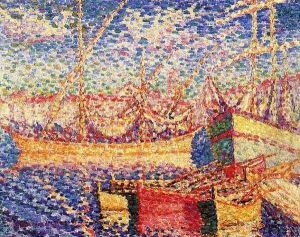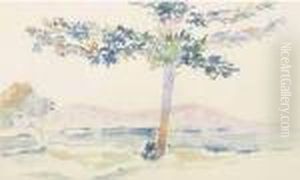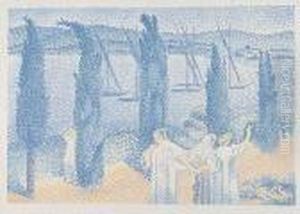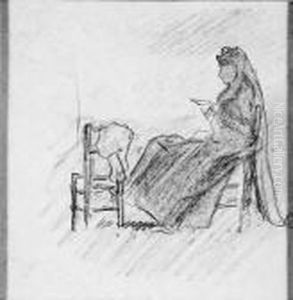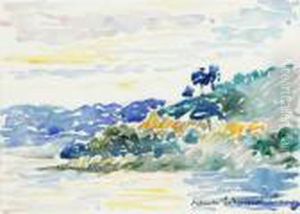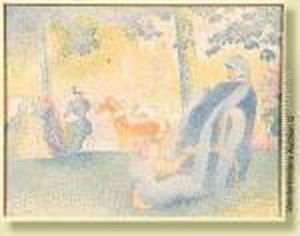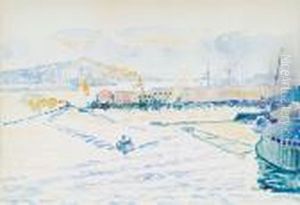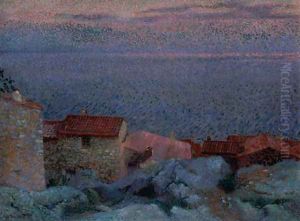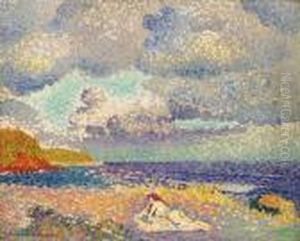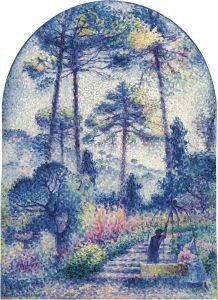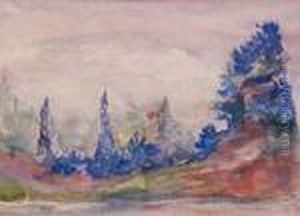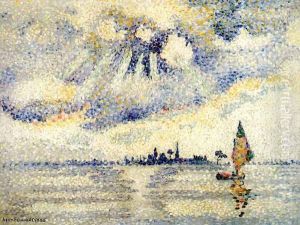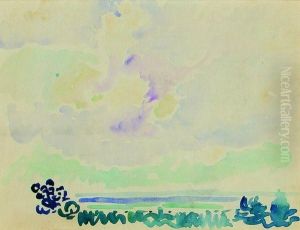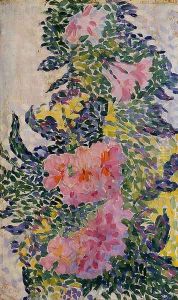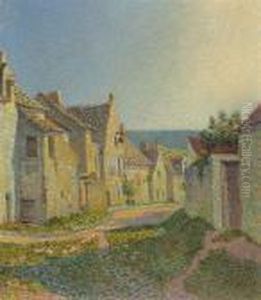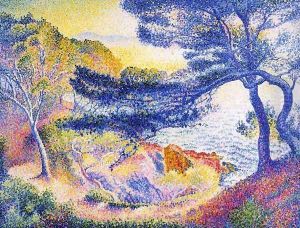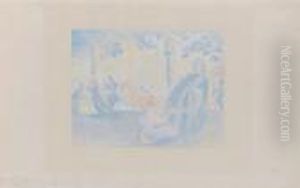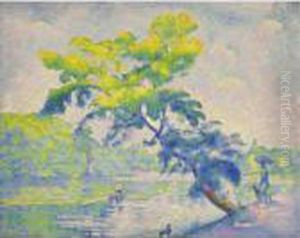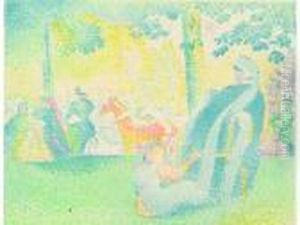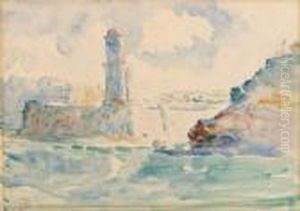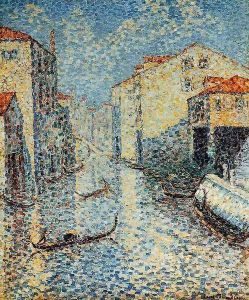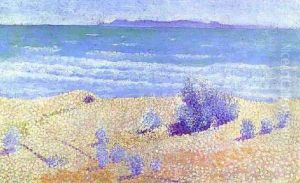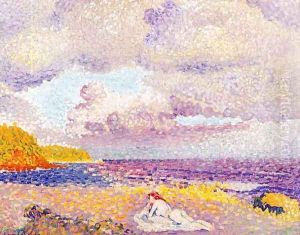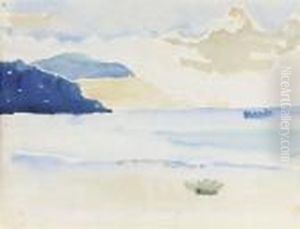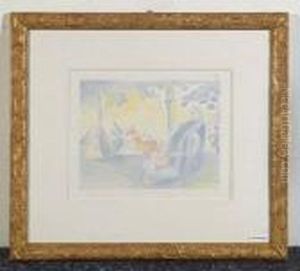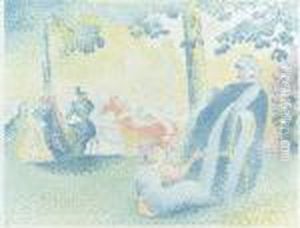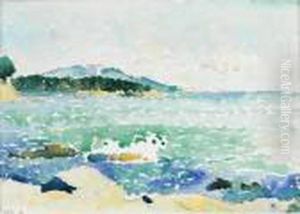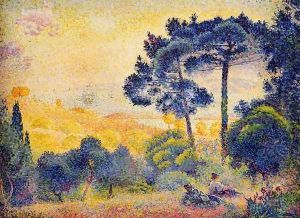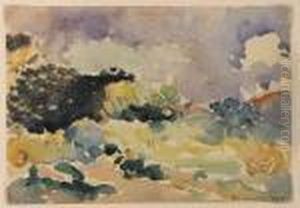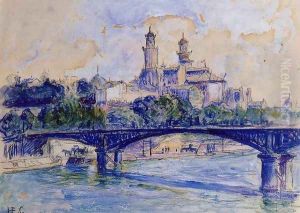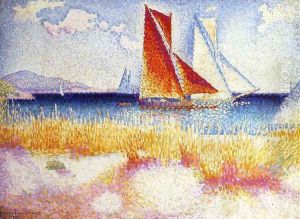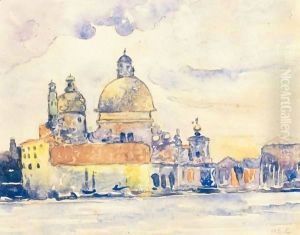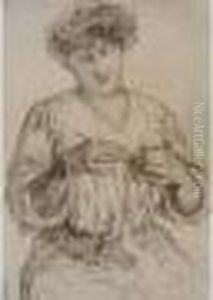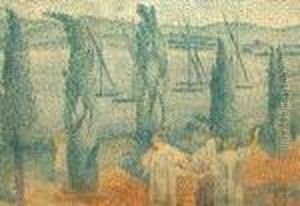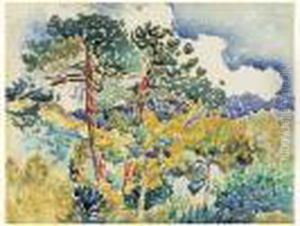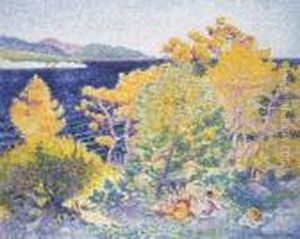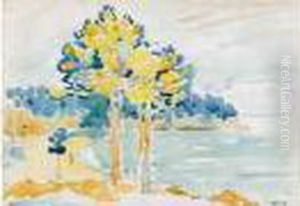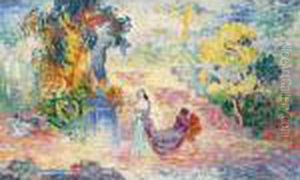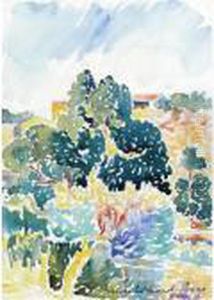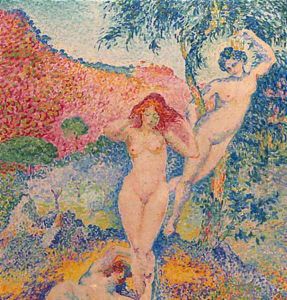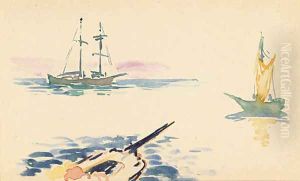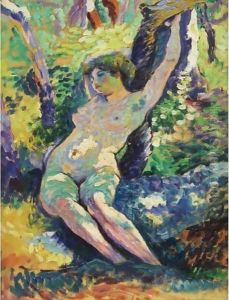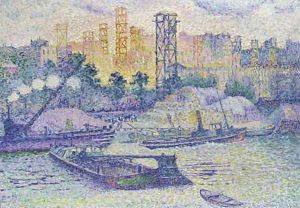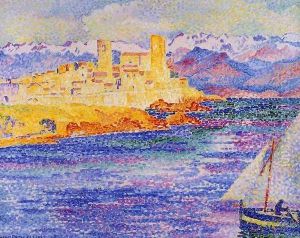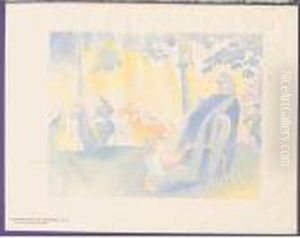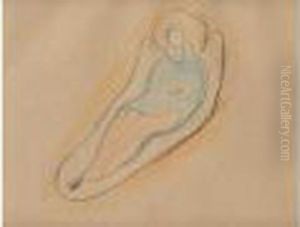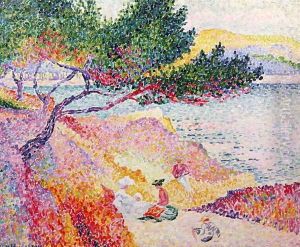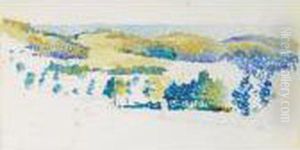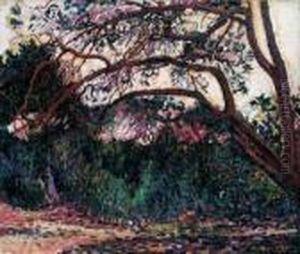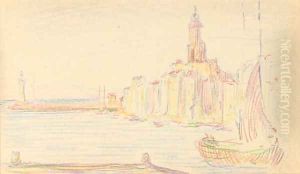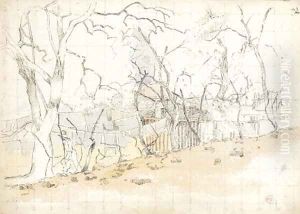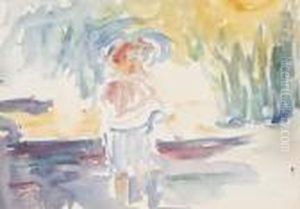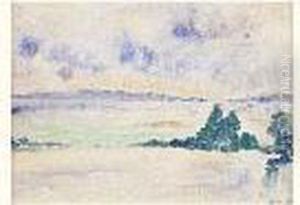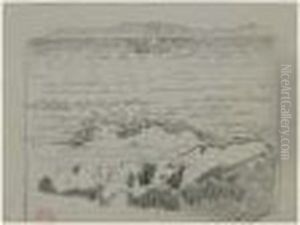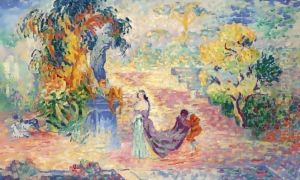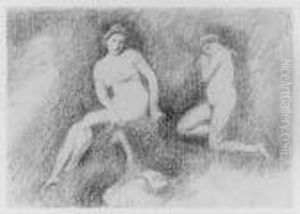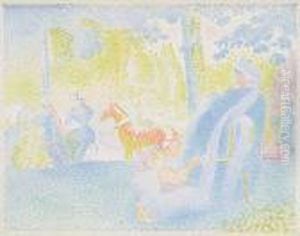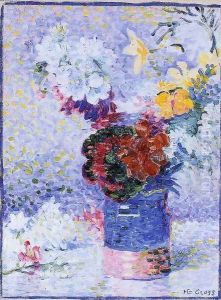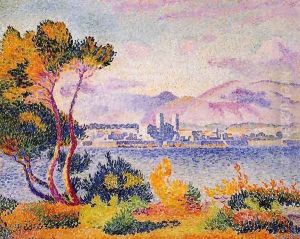Henri Edmond Cross Paintings
Henri Edmond Cross, born Henri-Edmond-Joseph Delacroix, was a significant figure in French painting at the turn of the 20th century. He was born on May 20, 1856, in Douai, a town in northern France, but later in life, he adopted the pseudonym 'Cross' to avoid confusion with the famous Romantic painter Eugène Delacroix. His initial artistic endeavors followed a realist tradition, and he studied under François Bonvin at the École des Beaux-Arts in Lille, before moving to Paris in 1878 to continue his education.
In Paris, Cross began to experiment with new styles and was particularly influenced by the work of the Impressionists, whose approach to light and color resonated with him. He became friends with leading artists such as Claude Monet and Georges Seurat. Over time, Cross's style evolved, and by the late 1880s, he started to develop a pointillist technique, characterized by the use of small, distinct dots of color applied in patterns to form an image. This technique was part of a larger movement known as Neo-Impressionism, spearheaded by Seurat, and Cross became one of its most prominent practitioners.
Cross's work during this period reflected his interest in color theory and the interplay of colors. His landscapes and figure paintings often depicted the leisurely life of the French Riviera, where he moved for health reasons in 1891. The Mediterranean light and landscape had a profound impact on his work, leading to the use of brighter colors and a more relaxed, fluid approach to pointillism.
In the late 1890s and early 1900s, Cross's work became even more abstract, with an emphasis on harmonious compositions of color and light. He was a significant influence on the development of Fauvism, a style known for its bold use of color and brushwork, as seen in the works of Henri Matisse and André Derain, among others.
Henri Edmond Cross continued to paint until his health sharply declined. He suffered from rheumatoid arthritis, which made painting increasingly difficult. Despite his illness, he remained an active participant in the artistic community, exhibiting with the Neo-Impressionists and being involved with the Salon des Indépendants. Cross passed away on May 16, 1910, in Saint-Clair, Var, just a few days shy of his 54th birthday. His legacy is marked by his contributions to the Neo-Impressionist movement and his influence on the generation of artists who followed.
